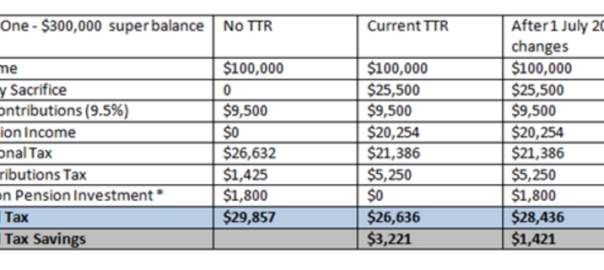
First Home Super Saver Scheme
Introduced as part of the 2017-2018 Federal Budget, the First Home Super Saver (FHSS) scheme aims to make housing more affordable for first home buyers. Essentially the FHSS scheme allows you to save money in your super fund that will go towards your first home.
 If you are making either concessional or non-concessional contributions into your super fund, you will be able to apply to have your voluntary contributions, as well as associated earnings, released to help you purchase your first home. Since your concessional contributions are taxed at 15% as opposed to your marginal tax rate, the FHSS scheme can be an effective tool in helping you save for your first home.
If you are making either concessional or non-concessional contributions into your super fund, you will be able to apply to have your voluntary contributions, as well as associated earnings, released to help you purchase your first home. Since your concessional contributions are taxed at 15% as opposed to your marginal tax rate, the FHSS scheme can be an effective tool in helping you save for your first home.
When making a withdrawal from super to help purchase a home, you are able to withdraw total voluntary contributions of up to a maximum of $30,000 across all years, with a maximum of $15,000 from any one financial year. The contributions are ordered by a first-in first-out approach. For example, Joe has made $10,000 of eligible non-concessional contributions each of the past 3 financial years. He finds a house he would like to buy. He can withdraw a total of $30,000 to purchase the house as each year he has stayed within the maximum of $15,000 per year. If Joe had made eligible non-concessional contributions of $20,000 and $10,000 in the past 2 financial years, he would be limited to only withdrawing $25,000 (maximum of $15,000 from the first year and $10,000 from the second year).
Once your first FHSS amount has been released to you, within 12 months you must do one of the following:
– Sign a contract to purchase or construct your home – you must notify the ATO within 28 days of signing the contract
– Re-contribute the assessable FHSS amount (less tax withheld) into your super fund and notify the ATO within 12 months of the first FHSS amount being released to you.
There is a strict set of criteria you must satisfy in order to be eligible for the FHSS:
– You must be at least 18 years old when you request a release from your super account
– You must never have owned property in Australia (this includes investment property, vacant land, commercial property, a lease of land in Australia or a company title interest in land in Australia).
– You must not have previously requested the Commissioner of Taxation in Australia to issue a FHSS release authority in relation to the scheme.
You may be eligible for the FHSS even if you do not satisfy the above conditions. More details of this can be found here.
There is also criteria on what you cannot purchase through the FHSS and these include:
– Any premises not capable of being occupied as a residence
– A houseboat
– A motorhome
– Vacant Land
One thing to note is that just because it can be done, doesn’t mean that every super fund offers it so if you believe you are eligible and would like to explore it further, it would be worthwhile contacting JBS.







 Sell, Sell, Sell
Sell, Sell, Sell
 Level Premiums – Level premiums can provide you with peace of mind as they are designed to remain stable. The premiums will remain stable from the policy commencement until you reach a predetermined age (e.g. age 55 or 65), at this point the premiums will switch to a Stepped premium. Level premiums can still increase due to indexation or other increases to the sum insured. Level premiums can also change if the underlying assumptions and/or expenses of the insurer have changed since the policy started – however this will generally affect the stepped premiums as well.
Level Premiums – Level premiums can provide you with peace of mind as they are designed to remain stable. The premiums will remain stable from the policy commencement until you reach a predetermined age (e.g. age 55 or 65), at this point the premiums will switch to a Stepped premium. Level premiums can still increase due to indexation or other increases to the sum insured. Level premiums can also change if the underlying assumptions and/or expenses of the insurer have changed since the policy started – however this will generally affect the stepped premiums as well.
 Since July 1 2017, the ten percent employment rule regarding tax-deductible super contributions has been replaced. The rule meant that a person could not claim a tax deduction on personal Super Contributions if more than ten percent of their assessable income was obtained as an employee. The new rule is now any person under age 65 now may be able to claim a tax deduction on their contributions regardless of their employment arrangement, whilst those aged between 65 and 74 need to satisfy the Work Test in order to be eligible to make a contribution, and subsequently claim a tax deduction.
Since July 1 2017, the ten percent employment rule regarding tax-deductible super contributions has been replaced. The rule meant that a person could not claim a tax deduction on personal Super Contributions if more than ten percent of their assessable income was obtained as an employee. The new rule is now any person under age 65 now may be able to claim a tax deduction on their contributions regardless of their employment arrangement, whilst those aged between 65 and 74 need to satisfy the Work Test in order to be eligible to make a contribution, and subsequently claim a tax deduction.
 With all the festivities and celebrations over and done with, for most of us it’s now time to pick up the pieces and start the New Year a fresh, which is a perfect time to review your personal insurance needs. Research from one of Australia’s largest personal insurance companies have found that only 37% of Aussies aged between 18-69 actually have life insurance and even more disturbingly only 18% have disability cover and income protection insurance. Further findings include how Australians are grossly underinsured. It’s estimated that the underinsurance gap in Australia is approximately $1.8 Billion, meaning there are a lot of Aussies out there who believe they have sufficient insurance cover, but in fact don’t. For most of us, we don’t like to think about insurance and when asked about how much we have, the first response is usually “I don’t know”.
With all the festivities and celebrations over and done with, for most of us it’s now time to pick up the pieces and start the New Year a fresh, which is a perfect time to review your personal insurance needs. Research from one of Australia’s largest personal insurance companies have found that only 37% of Aussies aged between 18-69 actually have life insurance and even more disturbingly only 18% have disability cover and income protection insurance. Further findings include how Australians are grossly underinsured. It’s estimated that the underinsurance gap in Australia is approximately $1.8 Billion, meaning there are a lot of Aussies out there who believe they have sufficient insurance cover, but in fact don’t. For most of us, we don’t like to think about insurance and when asked about how much we have, the first response is usually “I don’t know”.
 Saving on a tight budget can be quite difficult. To ensure you reach your holiday saving goals it is important to start saving early on. Another key to success is to set a concrete and achievable goal for yourself, and decide how exactly you will achieve that goal.
Saving on a tight budget can be quite difficult. To ensure you reach your holiday saving goals it is important to start saving early on. Another key to success is to set a concrete and achievable goal for yourself, and decide how exactly you will achieve that goal.







